Scientific name: Aquilegia species
Common Name: Columbine
Plant Family: Ranunculaceae (buttercup)
Article and photos by Janice Tucker
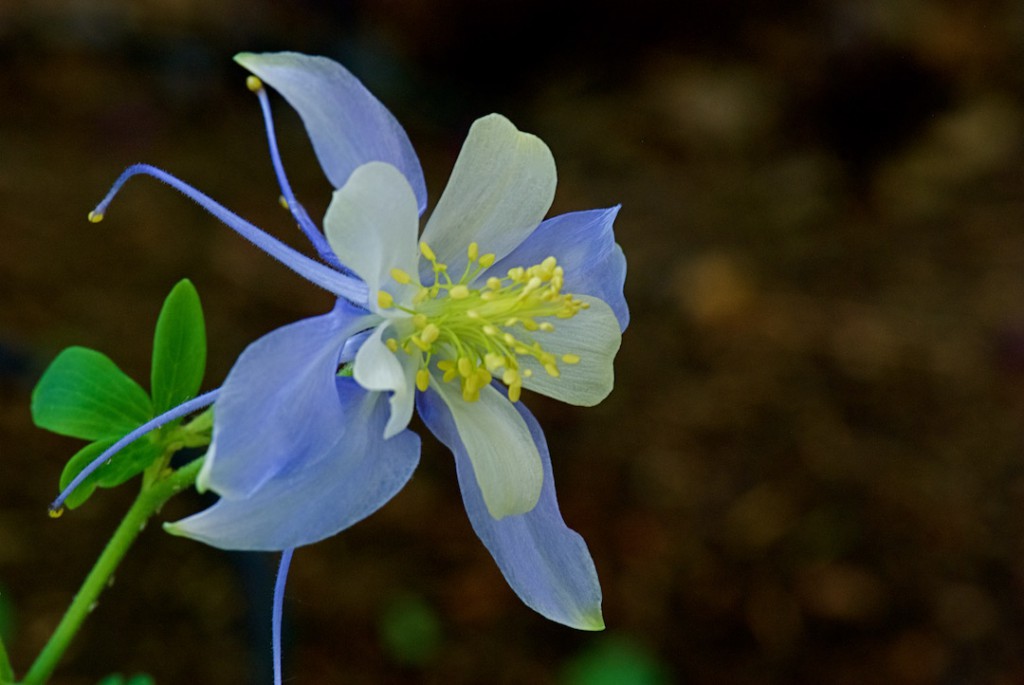
Blue columbine (Photo: Janice Tucker)
The Aquilegia, commonly known as the columbine, is one of Mother Nature’s highest artistic achievements. The beautifully designed origami-like flowers with their spurred petals perform a freestyle ballet as they sway gracefully atop tall, slender stems with handsomely lobed leaves.
Columbines have made themselves at home in North America ever since crossing the Bering Land Bridge from the furthermost northeastern regions of Asia 10,000 to 40,000 years ago. In North America, the wild columbines mostly prefer the cold winters of the northwestern United States, especially in the Rocky Mountain regions with elevations of 6,000 to 11,000 feet. However, some have made themselves comfortable in both the southwestern and eastern parts of the United States. The beautiful, blue Colorado columbine (A. caerulea) is the Colorado state flower. And the nodding, red American columbine (A. canadensis) is a prized flower in eastern regions of the United States. There are approximately 70 species of Aquilegia plus numerous hybrids and cultivars.
One may wonder how wild columbines thrive in rocky outcroppings with full sun since they normally prefer partial shade to keep them cool and hydrated. The answer may lie in the fact that water will accumulate in the rocks’ cracks and crevices, establishing a small reservoir sufficient to satisfy its moisture needs. Columbines flourish along streambed banks and can establish stands in mountain meadows where they grow free and beautifully wild. In a woodland, they add vibrant color beneath the dappled shade of aspen trees. It is very hard to resist the temptation to pick wild columbines. But please refrain from doing so. They do not last long as cut flowers. Enjoy them where they bloom naturally and leave them for others to take in their unique beauty. Even more importantly, do not try to “rescue” them from what may appear to be a hostile rocky habitat. Columbines have had thousands of years to hone their survival instincts and know what works to ensure their continued existence. If healthy, wild columbines are growing in hardscrabble leave them be. They do not want to be removed. Disturbing wild columbines interferes with their natural life cycle. They usually will not survive transplanting even to a seemingly more nurturing environment. There are plenty of columbine species, hybrids and cultivars available at nurseries to satisfy the home gardener. We should not be guilty of loving the wild columbines to death.
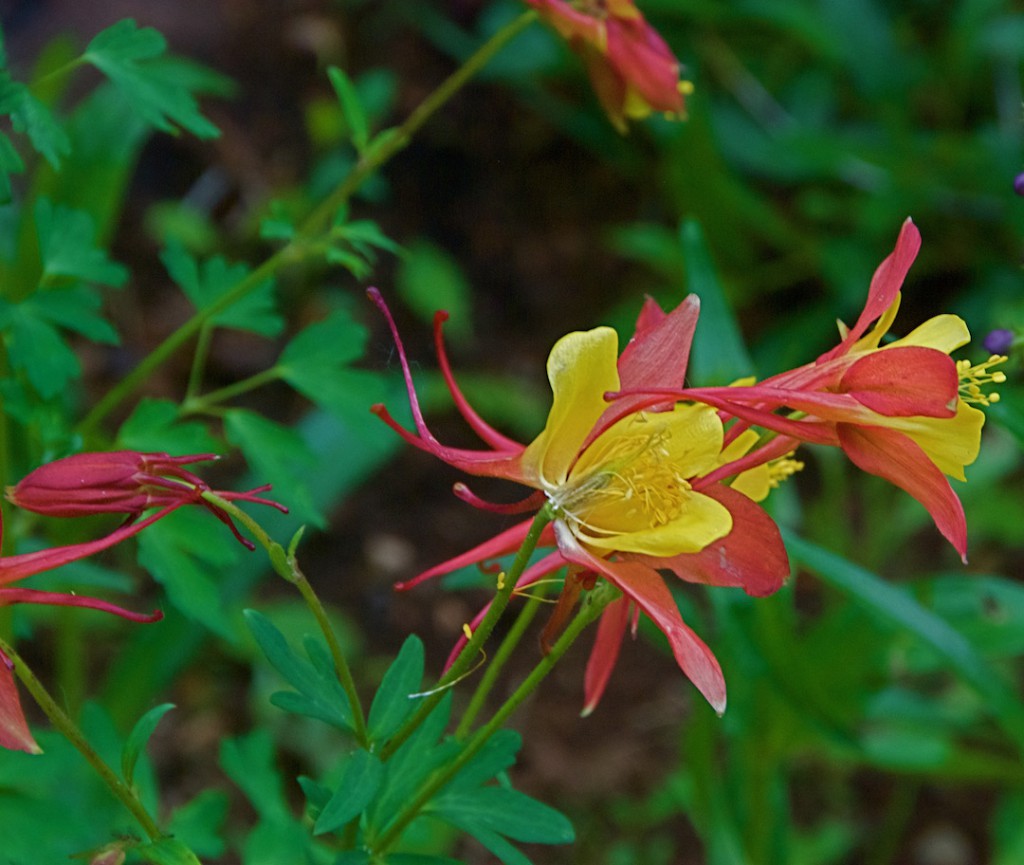
Photo: Janice Tucker
The columbine flower consists of five sepals that snugly fit around five trumpet-shaped, spurred petals. The light-to-medium green leaves are lobed and appear in groups of threes. Multiple stamens and the pistil burst from the center, extending past the petals. Colors range either in solid or bi-color shades of blues, yellows, pinks, whites, reds and purples.
The intricate flower construction is ingenious in its ability to entice and accommodate specific pollinators. Pollinators come to the columbine for its sweet nectar stored in the tip end of the petal spurs. When partaking of the nectar the pollinators often deposit pollen from another flower and take away pollen when brushing up against the stamens. Those are pretty straightforward facts for “the birds and the bees, and the flowers and the trees”. But somehow the columbine learns the feeding behavior of the pollinator that most often visits its flowers, be it hummingbirds, bees, butterflies, moths or flies. Once the principal pollinator’s preferences are identified, the columbine sets out to make it happy so it will visit often. It can genetically adjust its cell shape so that the flower arrangement and color tempt the pollinator to frequently drop by for dinner. For example, hummingbirds may communicate a passion for red petals and would really appreciate it even more if the flower held a nodding position with spurs long enough to accommodate their thin, pointed beaks. Bees, butterflies and moths and other insects with a lengthy proboscis might or might not care about color but could indicate that they would continually visit a columbine with an erect flower presentation and long spurs. A signal from primary pollinators with less lengthy beaks or tongues would let the columbine know that shorter spurs would allow them easier access to the nectar. While less frequent pollinators are still welcome to visit the columbine, it is the more prominent one that receives the red carpet treatment. This remarkable ability of flora negotiating with fauna to arrive at a mutually beneficial arrangement just boggles the mind! Unsurprisingly, the columbine’s unusual ability to change forms to attract pollinators is of great interest in the study of plant evolution and the natural creation of new species. An online USDA article entitled “Aquilegia Express: The Columbine Flower” offers an interesting explanation of the different columbine forms.
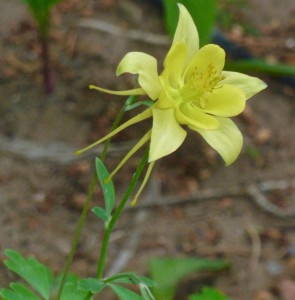
Yellow columbine side view
Columbines usually bloom from late May through June, although several new cultivars have been known to continue flowering well into the summer months, especially if they receive sufficient moisture. Hardy in USDA Zones 3 to 9, columbines should be planted in well-drained soil. Do try to plant them in partial shade in order to reduce water usage. They are considered perennials and in some cases, biennials, since some species will last only a year or two in a home garden. Deadheading will encourage new blooms but if the desire is to let them naturalize and spread, it is best to allow columbines to go to seed.
The golden columbine (A. chrysantha) grows well in the Santa Fe garden and has no doubt turned on its clever adapting talent to thrive in our region’s bright sunshine and dry climate. It happily shares garden space with geranium cultivars, artemisia, salvia and penstemon in the beds adjacent to the South Ramada of the Botanical Garden at Museum Hill. Those beds are abuzz with a variety of hummingbirds, bees, moths and butterflies during the spring and summer. Makes us wonder which pollinator will be determined as its primary visitor.
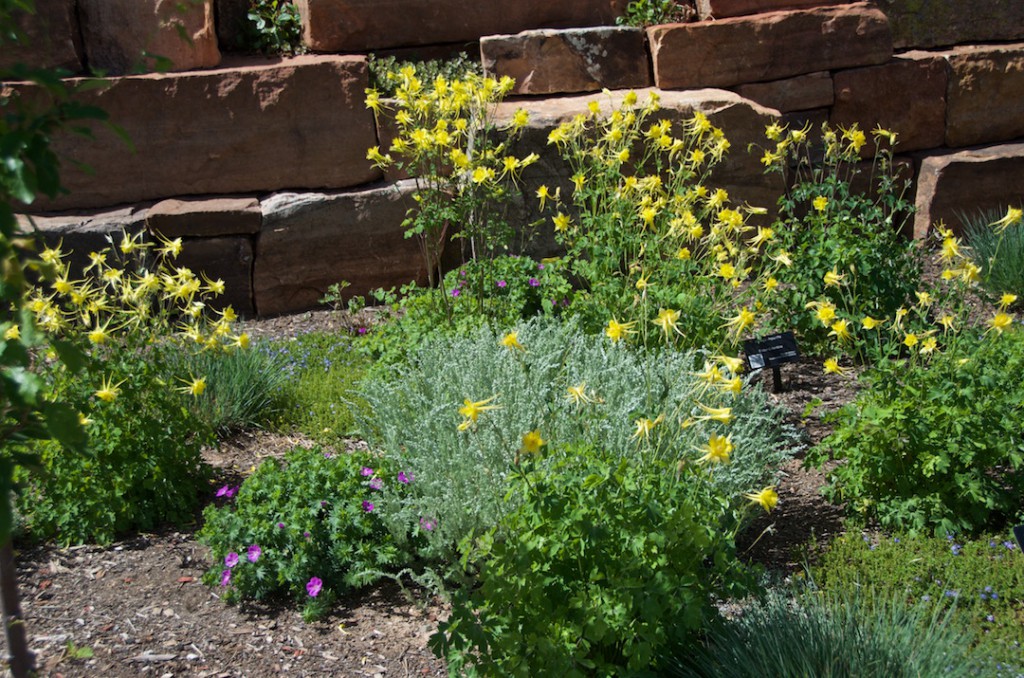
Golden columbine at Botanical Garden at Museum Hill (Photo: Janice Tucker)
The scientific name, Aquilegia, – pronounced a-kwi-LEE-jee-a – is taken from the Latin, aquila, which means, “eagle”. This describes the spurs of the petals as extended eagle talons. However, there are some who claim aquilegia stems from a compound word of aqua (water) and legere (to collect). This definition refers to the nectar that collects at the tip end of the spur. And now that the definition of Aquilegia has been turned on its ear, we move along to the common name of columbine. Columbine is a derivative of columbinusm the Latin name for dove. A bit of imagination may be required at this point. When looking at a columbine so that the spurs point upward – or in a nodding flower formation – the flower is said to resemble a cluster of 5 doves. The spurs are the doves’ heads and necks, the sepals the wings and the wide parts of the petals the bodies. Does the flower resemble a bird of prey or a bird of peace – or a vessel that stores the nectar? Take your pick.
Fanciful as it is, the doves get my vote. Peace.
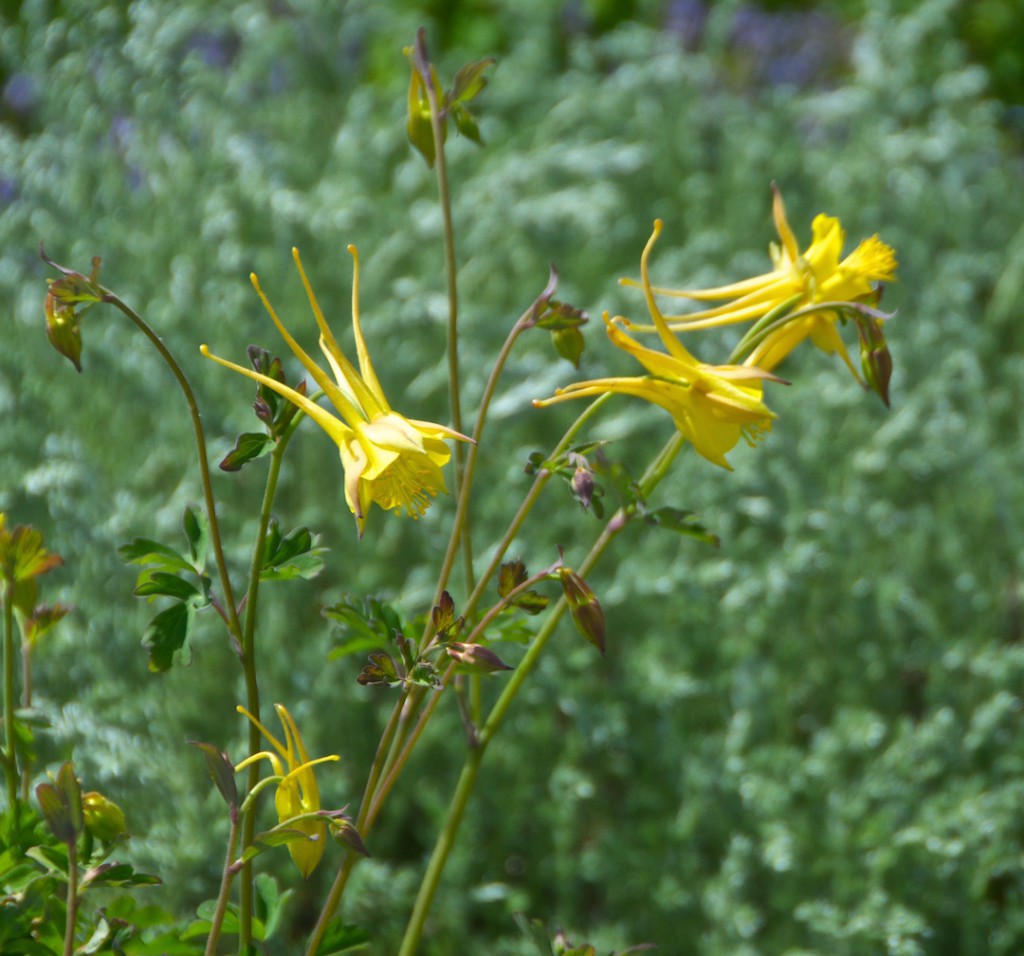
See if you can make out the doves
Many thanks to Helen Woody and Jeanne Gozigian for proofreading this article.
Sources consulted and cited:
- Aquilegia Express: The Columbine Flower – http://www.fs.fed.us/wildflowers/beauty/columbines/flower.shtml
- Aquilegia in Flora of North America @efloras.org
- Dave’s Garden Botanary, www. http://davesgarden.com/guides/botanary/
- National Audubon Society, Field Guide to Wildflowers, Western Region
- Peterson Field Guides, Rocky Mountain Wildflowers
- Sanders, Jack, The Secrets of Wildflowers
- Schneider, Al, Southwest Colorado Wildflowers, swcoloradowildflowers.com


